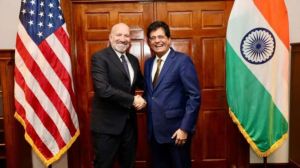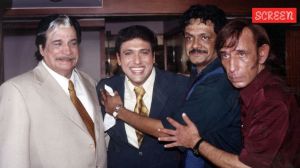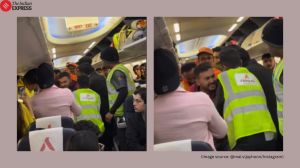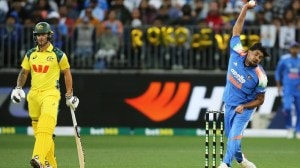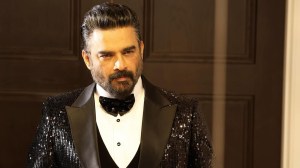`Jaffna’s fate remains on how much Censored Censored Censored…’
Colombo, May 23: The Sunday Leader had asked for it.Last Sunday, the Sri Lankan newspaper led with a banner headline which said, ``Palaly ...

Colombo, May 23: The Sunday Leader had asked for it.
Last Sunday, the Sri Lankan newspaper led with a banner headline which said, “Palaly not under attack.” The story began: “Heavy fighting was notraging in northern Jaffna peninsula and Tigers were not pounding Palaly air base with heavy artillery and mortars for the fourth consecutive day.”
“In the so-called attacks, no soldiers were killed nor wounded and several buildings within the base had not suffered minor damage,” it continued, tongue firmly in cheek. And as the story said later, “With no heavy confrontation continuing, no leave for military personnel was cancelled nor were local and foreign journalists banned from visiting areas in north and east.”
The Sunday Leader should have thought about the consequences of putting out such a flattering picture of the war around Jaffna.
The Competent Authority mulled over the report entire Sunday and part of Monday. By evening, it had issued orders closing down the paper for violating Emergency Regulations under which a press censorship has beenimposed in the country early this month. The local and foreign media has been banned from reporting anything which could hamper the war effort, or create bad blood between communities.
The Sunday Leader is not the first paper to have its press sealed under the regulation. Uthayan, the biggest paper in Jaffna, has also been closed. The news editor of Teleshan TV was questioned for reporting the bomb blast near a Buddhist temple in Batticaloa. The Censors had asked the media to hold on to the news for a day; so that communal passions were not fuelled during the Buddhist festival of Vesak.
The intentions in this case could be pious. But many newspapermen and politicians feel the Government is carrying things too far. The Editors’s Guild has condemned the move. The Opposition — which in its timein power muzzled the press in other ways — took out a protest march. And members of Parliament have grappled with the idea of discussing war in camera rather than letting bureaucrats censor later what they say inthe House.
Going by the book, any story related to the war — unless it is based on the government’s own press handouts — has to be sent first to Ariya Rubasinghe of the Information Department and the Competent Authority. Rubasinghe and his colleagues scan the copy for seditious writing, chop off the offending bits and clear it for publication.
In return they get no gratitude. One local paper claimed it sent a report in French for vetting by Rubasinghe. It was clearly meant to harass the Censor.
The reader gets a paper full of holes. Or with stories liberally peppered with the word “Censored” indicating places where the Competent Authority has wielded the black marker. He goes through the old fill-in-the-blanks school routine. But what sense can they make of The Sunday Times defence column which ends this way: “The fate of Jaffna now remains on how much Censored Censored Censored Censored Censored Censored Censored how best troops will be able to counter their advance.”
The Sunday Times has crafted an icon which it uses to fill the empty spaces caused by the censoring. It is a little caricature of a man, blindfolded, with his hands trussed up and a rolled-up copy of EmergencyRegulations stuffed into his mouth.
All this might be keeping the readers amused. But the information flow from Jaffna, hardly smooth even in the best of times, gets clogged. Take last week’s tragedy in Kaithady near Jaffna town. The government put out a story about LTTE shells killing 15 inmates of an old people’s home at Kaithady, suggesting the rebels were seeking revenge against pro-Government Tamils. The LTTE has a different take on it, but Sri Lankans who rely only on the local papers will hear nothing of it.





- 01
- 02
- 03
- 04
- 05








